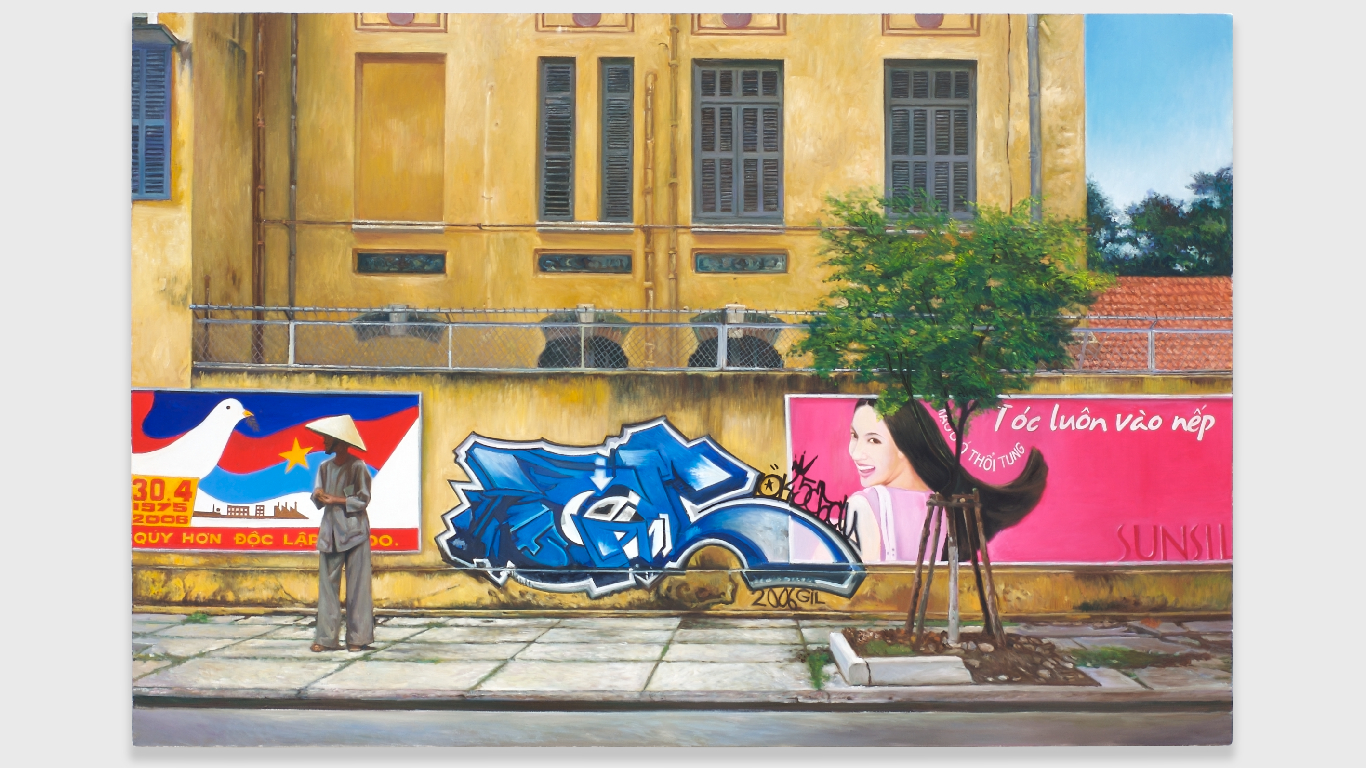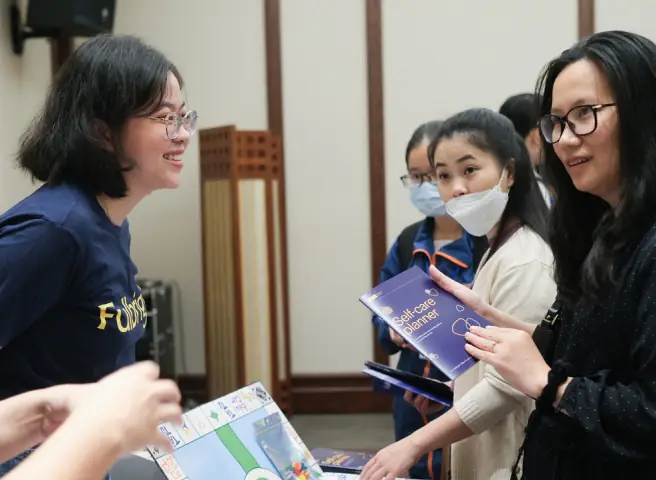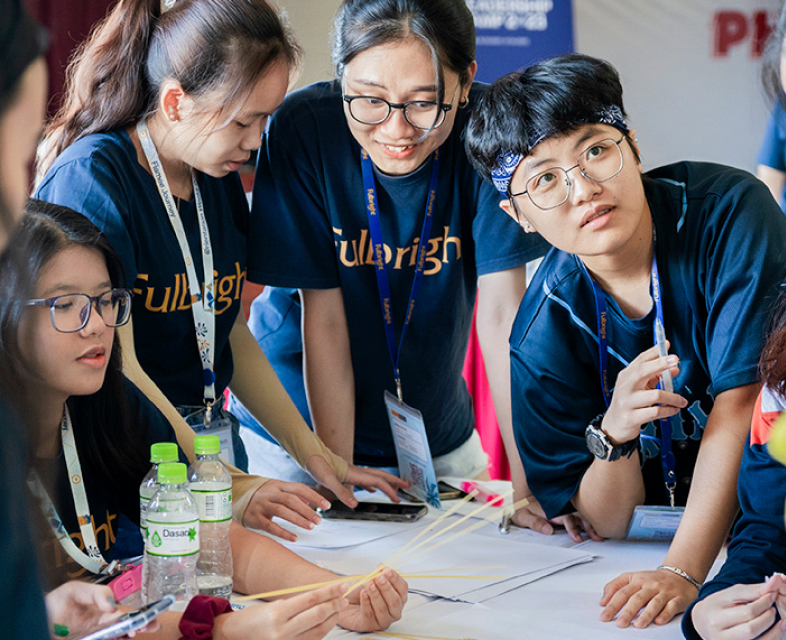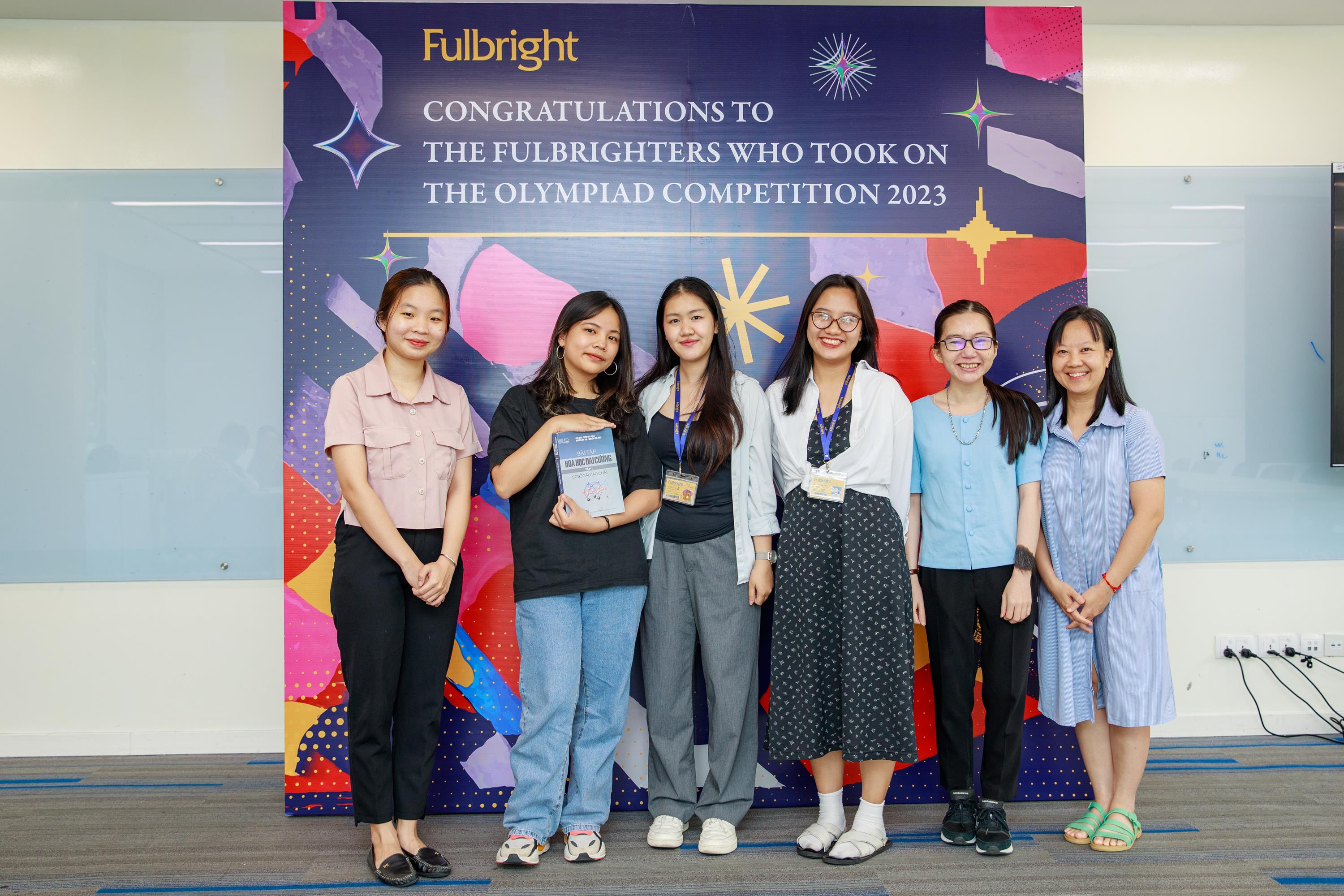
In her new book, “The City in Time: Contemporary Art and Urban Form in Vietnam and Cambodia”, Pamela Nguyen Corey, Assistant Professor in the Art and Media Studies Department at Fulbright, traces the urban environments of Ho Chi Minh City and Phnom Penh as dominant influences on artistic developments in those cities over the last two decades.
From her undergraduate days at the University of California, Irvine, to her doctoral degree in History of Art and Visual Studies from Cornell University, the Southeast Asian region has been a focal point of Pamela Nguyen Corey’s study on modern and contemporary art history. “I had begun visiting Southeast Asia after I graduated from UC Irvine,” she says, reflecting on the subject of her new book. “I first went as a tourist and later, when I was a MA student, I spent a summer in Cambodia conducting a photography project in collaboration with an ethnographic field school led by anthropologist Judy Ledgerwood. During my doctoral coursework at Cornell, I became very interested in theories of landscape, space, and urbanism, and I came across several artworks by Vietnamese and Cambodian artists that reflected upon the nature of urban space in globalizing cities.”
Prior to her appointment as faculty member in Art and Media Studies at Fulbright University Vietnam in the Spring of 2021, Corey was Assistant Professor in the History of Art and Archeology Department at SOAS University of London. She has contributed to publications such as Oxford Art Journal, Journal of Vietnamese Studies, Art Journal, Journal of Modern Craft, and Udaya, Journal of Khmer Studies, with titles ranging from “Đổi Mới and the Globalization of Vietnamese Art” (co-authored with Interim Provost Nora Taylor) to “Beyond yet Toward Representation: Diasporic Artists and Craft as Conceptualism in Contemporary Southeast Asia” to “The ‘First’ Cambodian Contemporary Art”.

Her new book, “The City in Time: Contemporary Art and Urban Form in Vietnam and Cambodia”, published in October 2021 by the University of Washington Press and a recipient of a Millard Meiss Publication Fund from the College Art Association, provides “new ways of understanding contemporary artistic practices in a region that continues to linger in international perceptions as perpetually ‘postwar’.”
The blurb follows: “Focusing on art from the last two decades, Corey connects artistic developments with social transformations as reflected through the urban landscapes of Ho Chi Minh City and Phnom Penh. As she argues, artists’ engagements with urban space and form reveal ways of grasping multiple and layered senses and concepts of time, whether aligned with colonialism, postcolonial modernity, communism, or postsocialism. The City in Time traces the process through which collective memory and aspiration are mapped onto landscape and built space to shed light on how these vibrant Southeast Asian cities shape artistic practices as the art simultaneously consolidates the city as image and imaginary. Featuring a dynamic array of creative productions that include staged and documentary photography, the moving image, and public performance and installation, The City in Time illustrates how artists from Vietnam and Cambodia have envisioned their rapidly changing worlds.”

Tuan Andrew Nguyen, in collaboration with Phunam Thúc Hà, Gil 145, Ngô Đồng, & Jason Huang, Proposal for a Vietnamese Landscape #2: Independence and freedom, Gil, your hair back into place [Độc Lập Tự Do, Gil, Tóc Luôn Vào Nếp], 2006. Oil on canvas, 180 x 120 cm. Collection: Queensland Art Gallery | Gallery of Modern Art. Photograph by Phunam Thúc Hà, courtesy of the artist.

Dinh Q. Lê, I Am Large, I Contain Multitudes, 2009. Bicycle, steel, mirrors, dimensions variable. Courtesy of the artist, PPOW Gallery, Shoshana Wayne Gallery, Elizabeth Leach Gallery, and 10 Chancery Lane Gallery.
Corey’s analysis is grounded in the fieldwork she conducted while living in Vietnam and Cambodia from 2010 to 2012. Between 2015 and 2018, she worked on developing a book manuscriprat based on research, while adding new discussions and revising some of her thinking about existing works. The fact that Ho Chi Minh City and Phnom Penh were linked and selected as her sites of study owes to Corey’s perception of their sharing “a more intimate historical and cultural geography,” which she suggests might be a more productive lens as opposed to “a comparative nation-focused account of contemporary art in Vietnam and Cambodia.”
As Corey elaborates: “The latter would risk glossing over the regional complexities of the two countries and would be too broad, and possibly superficial, in scope. We know that southern Vietnam was historically Khmer land – in Khmer, it’s called Kampuchea Krom – prior to Vietnamese expansionism from the 16th-19th centuries, and there are still lingering layers of culture and language that bear a sense of connectivity between the two regions. The two cities also share what are considered to be postcolonial periods of cultural efflorescence in the 1950s and 1960s. However, the broader politico-cultural orientations of the modern nations of Vietnam and Cambodia produce contextual differences that I think make the city-specific comparative study more interesting.”

Pamela Corey interviewing artist Tor Vutha in Battambang, Cambodia, in August 2011. Photograph by Kristina Wong.
While the traditional Western-centric narrative of art history has been dissected and deconstructed in recent decades at leading institutions over the Atlantic, Southeast Asian art still plays a comparatively minor role in academic discussions, or record-breaking auctions. “For those of us working in Southeast Asian Studies, we are still faced with the ongoing problem of regional definition,” Corey says. “Regarding contemporary art, there has been a problematic tendency to represent the works of Southeast Asian artists as primarily preoccupied with such themes as Buddhism and trauma, for example. However, we can find artistic practices in Southeast Asia that are in dialogue with many of the strategies and concerns shared by artists around the world, e.g., archival practices, historiography, memory, documentary art, performance, digital art, posthumanism and ecological issues, etc.”
With “The City in Time: Contemporary Art and Urban Form in Vietnam and Cambodia”, she says: “My main objective was to produce a sound piece of scholarship that contributed to studies of contemporary art history and Southeast Asian studies. As you can see from the book blurb, I’m trying to expand what has been a predominant focus on contemporary artworks by Vietnamese and Cambodian artists as symbols of trauma.”

Book launch of Nguyễn Quân’s book Mỹ thuật Việt Nam thế kỷ 20, with Nguyễn Quân, Ngô Thị Thùy Duyên, Pamela Corey, and Nguyễn Kim Ửng, April 2011. Photograph by Ngô Thị Thùy Duyên.
How does she feel, now that her book has been published? “Relief,” Corey says. “It’s nice to see the culmination of years of research and writing come to fruition in the book’s publication, and it signifies an academic rite of passage. [I am] happy to close the chapter on this work and continue with some new directions of research.”
At the moment, much of her time is dedicated to the tutelage of undergraduate students at Fulbright, whose passion and spirit reminds Corey of her own days at school. “My interest has always been in modern and contemporary art because I trained as an artist when I did my BA in Studio Art at the University of California, Irvine,” she says. “Most of my courses were taught by contemporary artists, many of whom had studied at CalArts [California Institute of the Arts], which was highly renowned for its conceptual, cutting-edge curriculum in the 70s and 80s.” Through her courses at Fulbright, ranging from Arts of Southeast Asia, Visualizing Vietnam, Special Topics in Contemporary Art to the introductory basics, Corey hopes to inspire a new generation of artists, curators, scholars and cultural workers who shall contribute to the development of arts in Vietnam and beyond.
Quyen Hoang







